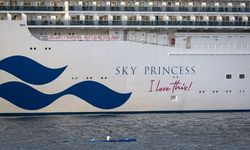The vessel, made entirely of reeds, was built using techniques and materials that date back to 2100 BC, as referenced in ancient clay tablets.
The reconstruction, known as a Magan boat, measures approximately 59 feet in length. These boats were historically robust, facilitating the exchange of goods such as copper, textiles, and semiprecious stones between societies in Mesopotamia and the Indus Valley—regions now known as Iraq, Pakistan, and India. This trade occurred around 4,000 years ago when the Persian Gulf was a hub of global maritime activity.
The project brought together 20 specialists, including archaeologists, engineers, and scientists, who aimed to demonstrate the seafaring capabilities and lifestyle of ancient people while preserving the UAE's maritime heritage. The design of the vessel relied on a combination of textual, iconographic, and archaeological evidence from the region. Notably, an ancient clay tablet from Iraq, believed to list materials for shipbuilding, and clay models found in Iraq helped shape the vessel's design.
Using hand tools and traditional methods, the team constructed the outer hull from 15 tons of locally sourced reeds. They applied animal fats to wooden frames for waterproofing, ensuring the boat’s seaworthiness without the use of modern materials like nails or screws, which could damage the structure.
The Magan boat achieved a sailing speed of 5.6 knots during its sea trials and maiden voyage. It will soon be displayed at the Zayed National Museum on Saadiyat Island, alongside exhibits that detail the Persian Gulf’s maritime history and cultural heritage.
Peter Magee, director of the Zayed National Museum, highlighted the significance of the project, stating, “We designed the ship using a combination of textual, iconographic, and archaeological evidence from the region. This includes an ancient clay tablet from Iraq listing a large quantity of materials, likely used as a shopping list for an active shipyard building. The shape of the vessel is based on ancient clay models found in Iraq.”
The successful reconstruction and voyage of the Magan boat offer a unique glimpse into ancient shipbuilding and trade, enriching our understanding of historical maritime practices.






